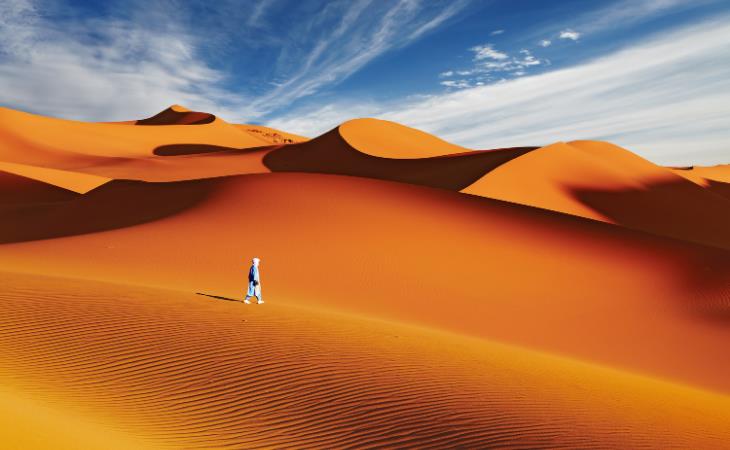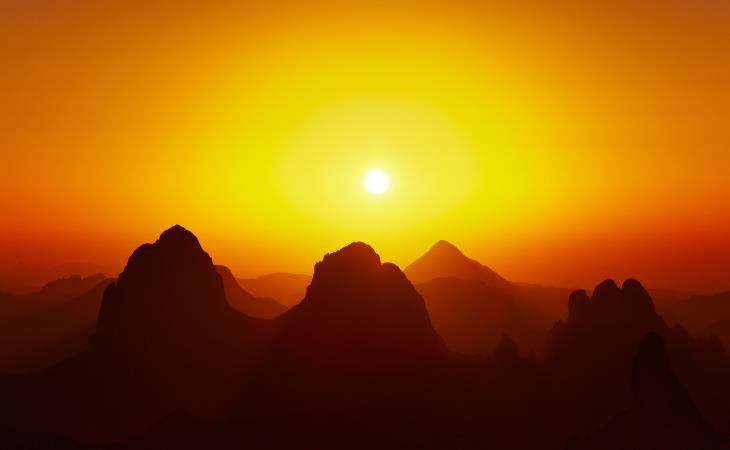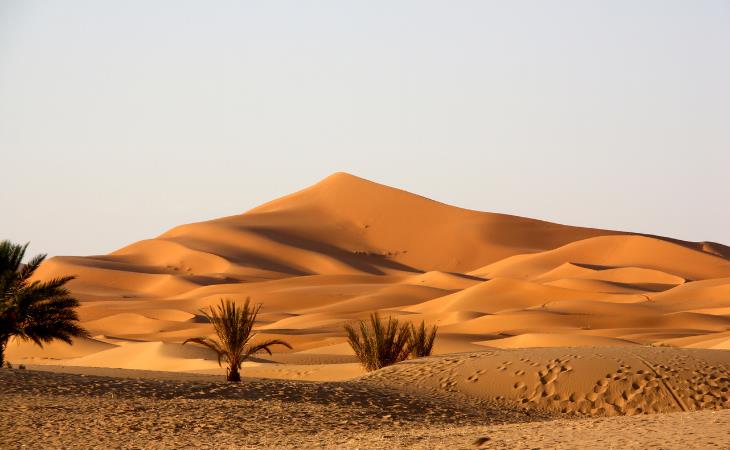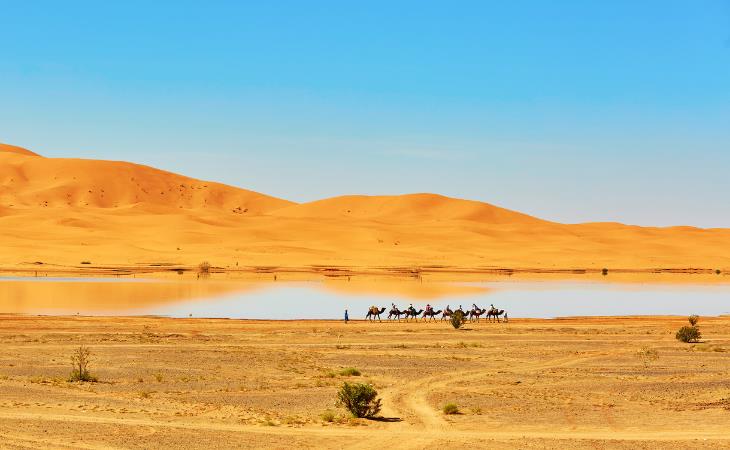Many people mistakenly believe that the Sahara holds the title of the world's largest desert. In reality, it ranks as the largest hot desert, falling behind the Arctic and Antarctica, both classified as cold deserts. During the summer, temperatures in the Sahara range from 38–46 °C (100.4–114.8 °F).
2. The Sahara is much more than just sand
The Sahara is more than simply a sandy wasteland; it has a diverse terrain that includes desert plateaus, salt flats, sand dunes, mountains, and parched valleys. With the exception of the ever-flowing Nile, the rivers and streams in the Sahara are seasonal. Over 20 lakes punctuate the desert, predominantly saltwater, with Lake Chad standing out as the sole freshwater oasis.
Emi Koussi (3,415m), a volcano in Chad's Tibesti Mountains, is the highest peak in the Sahara. The Ar Mountains, Saharan Atlas, Adrar des Iforas, Hoggar Mountains, Tibesti Mountains, and Red Sea Highlands are among the other mountain ranges in the area.
3. The Eye of the Sahara
The Richat Structure, popularly known as the Eye of the Sahara, is a geological marvel in Mauritania, which is located in the Sahara Desert. This circular feature, which was initially misidentified as an impact crater, spans about 50 kilometers in circumference. Its unique concentric rings, said to have evolved naturally through erosion, give it a distinguishing feature visible from space.
4. Hidden aquifers and fossil water
Under the parched surface of the Sahara lies a large network of old aquifers containing fossil water, some of which date back to the last ice age. These subterranean reservoirs, discovered using satellite technology, contain water that has been percolating into the ground for thousands of years. The problem is to obtain and manage this nonrenewable water source in a sustainable manner.
5. There are no clouds above the Sahara
In the Sahara, the absence of rain means no cloud formation, leaving the sky consistently clear. This lack of cloud cover contributes to significant daily temperature fluctuations, as the setting sun has no obstacle to retaining surface heat.
6. Crossing point for migratory birds
Although the Sahara is a harsh environment, millions of birds migrate along its route. Migratory birds, including raptors such as eagles and falcons, travel thousands of kilometers across the vast desert between their breeding grounds in Europe and wintering grounds in Africa to reach their breeding grounds. Spontaneous pauses are essential to the survival of birds, demonstrating the interconnectedness of ecosystems across large distances.
7. There are only 20 lakes in the Sahara
The majority of them are salt lakes. The reason behind the saltiness of these lakes is the high rate of evaporation. When water is exposed to the surface in an arid and dry environment, it tends to become salty. Some lakes in the Sahara desert evaporate around 6 meters of water every year. There are unique Ounianga lakes in northeastern Chad that were formed by trade winds, giving them a distinct shape. These lakes are surrounded by sand dunes and were previously a single huge lake that existed between 15,000 and 5,500 years ago.
All 18 Ounianga lakes are nourished by water stored in an underground aquifer thousands of years ago during a wet episode in Saharan history.
8. This desert turns to vegetation every 20,000 years
The Sahara transforms into a savannah clothed in lush grasses every 20,000 years as the tilt of the Earth's axis changes. This axis movement shifts the position of the North African monsoon, a monsoon that could revitalize the Saharan region. The current desert phase will continue for about 15,000 years until the Sahara returns to savannah.
Related: Did You Know That The Sahara Was Once a Green Land?
9. The oldest mummy in the world was found in the Sahara desert
The Tashwinat mummy, discovered in a cave beneath the Uan Muhuggiag archaeological site in Libya, was the perfectly preserved mummified body of a three-year-old who had been buried around 5,400 to 5,600 years ago. This tomb, wrapped in goatskin and imbued with herbs, defies conventional chronology. Based on archaeological findings, the beginning of the Egyptian state dates back to 3000 BC, which means that this burial predates ancient Egypt by approximately half a millennium.
10. The Sahara Desert cuts across 11 countries
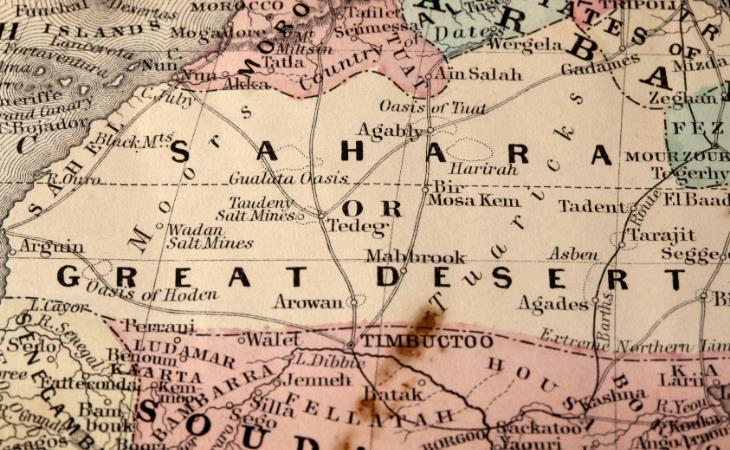
The Sahara Desert covers an area of 3,500,000 square miles and stretches across Algeria, Chad, Egypt, Libya, Mali, Mauritania, Morocco, Niger, the Western Sahara, Sudan, and Tunisia. This immense expanse significantly defines the geography of North Africa. An important feature of the northern sector is the presence of a fertile area encompassing the Mediterranean Sea coast, the Maghreb's Atlas Mountains, and the Nile Valley.
The Sahara Desert meets the Red Sea to the east, while the northern boundary lines up with the Mediterranean, and the western portions meet the Atlantic, with a southern border next to tropical savannah. The geography of the desert changes from arid deserts to coastal lowlands.

